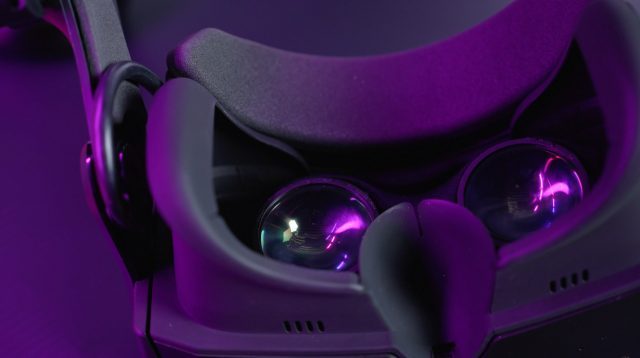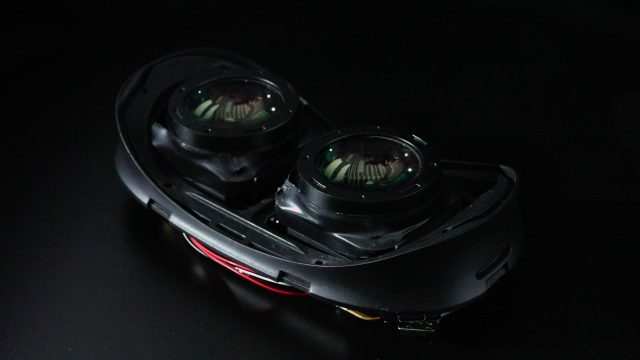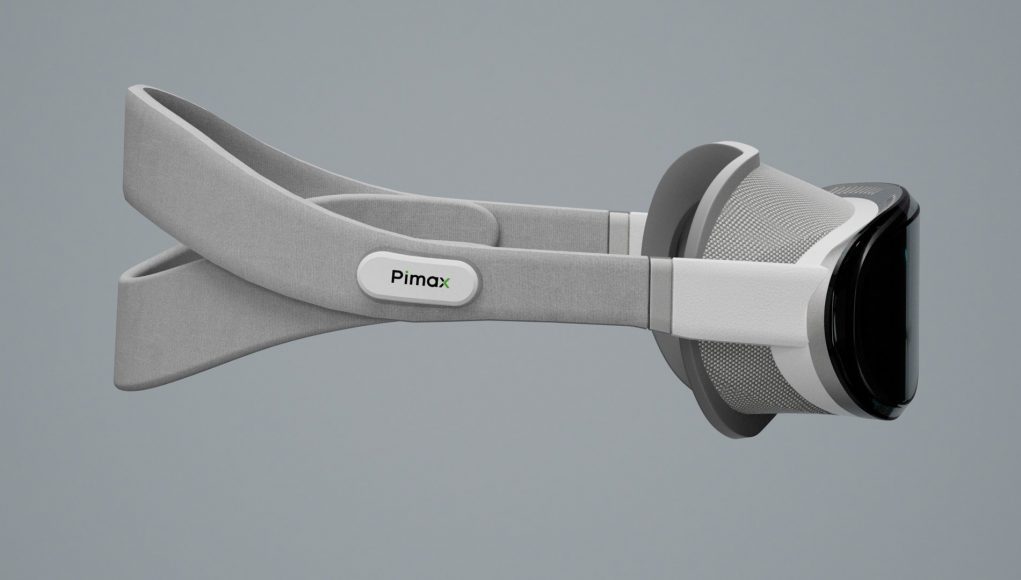With the reveal of Pimax’s upcoming Dream Air headset, the VR community at large had plenty of questions. We put those questions straight to the company, and also got a glimpse of early prototypes, a full list of specs, and an update on unreleased products.
Pimax is, at this point, a seasoned maker of VR headsets. But the company has faced recurring criticism regarding product polish, strategic focus, missed release dates, and announcing new products before fulfilling older promises.
The company’s latest product announcement, the compact Dream Air headset, naturally resurfaced these complaints, with many people asking how Pimax would do better this time around. So we sent many of the most commonly asked questions direct to the company. Here’s what we got back, including photos of Dream Air prototypes, a full list of specs, and an update on previously announced (but still unreleased) products.
Q: How confident is Pimax that Dream Air will be completed and ship in meaningful quantities by May 2025?
A: Internally, we’ve been developing the Crystal Super micro-OLED and Dream Air for over a year now (internally, they’re largely the same headset). We have a fully working optical engine, and think the remaining time to May is enough to get the rest done, similar to the timeframe of the Crystal Super’s development of the past year.
The Dream Air utilizes the same optical engine solution as the Crystal Super, along with its underlying technologies, but in a new form-factor design. You can read here more about how the Dream Air and the Crystal Super micro-OLED have the same technical components.
The main challenge is the supply of micro-OLED panels, and perhaps the ringless controllers. (We currently think that the first batches of the headset may ship with ringed controllers as on the Crystal/Light/Super, which we can exchange for ringless controllers later).
We’re confident of shipping around 200 to 300 headsets in May. This is also why we had to announce the headset now. (Several reasons addressed below.)
Q: Why was the headset announced so soon after Super? And why already open up pre-orders?
A: Several reasons. We announced the Dream Air now because we don’t want to announce this after the Super starts shipping, and then have users feel they would have ordered this one if they knew. We already see this remark now in our Discord, but actually—customers can still change their pre-order from the Super to the Dream Air if they wish.
Another reason is the scarcity of micro-OLED panels. Currently in the market of micro-OLED panels, demand firmly outnumbers supply, so the delivery times for when we place an order is long, several months. We open up pre-orders to get a better idea of how many headsets our users want, and also to place the order for the panels for the Dream Air to be shipped in May. This order needs to be placed before or in early January, as suppliers also take holidays during Chinese New Year.
The long wait time for micro-OLED panels isn’t unique to Pimax. We also see similar products from competitors with the same issue, and therefore they don’t offer refundable pre-orders.
That said, our pre-orders are refundable before shipping (and users also have a trade-in window once the headset arrives), and we have added a $1 reservation option.
Q: What do you say to people who think Pimax should focus on fewer products?
A: We have the strong ambition to be a multi-SKU company, as VR headsets are also quickly diversifying. Our focus is always on providing the ultimate experience, and for different use cases we’ll have the Crystal line, as well as the new Dream line.
That said, all our headsets share a lot of the same core technology, from software to hardware. All headsets are focussed firmly on PCVR. We have learned from the past (e.g. Portal, which wasn’t PCVR.)
Pimax has a 9 years history of making VR headsets, we own two R&D offices and are opening our second assembly line to support this multi-SKU strategy.
To provide multi-SKU using shared technology allows us to pour more resources into developing technology that benefits all headsets. It also prevents us from having just one huge sales peak in the year, and it spreads out orders across a whole year more evenly, which makes supply and production resources easier to manage (we own our own factory with our own staff). Peaks are generally really bad for efficiency.
Q: Any more headsets coming from Pimax?
A: We’ll update some old models, but there are no more headsets coming that are more advanced in specs than the Dream Air and Crystal Super, except for the 12K.
Q: How far along is the design of the Dream Air? Were the renders shown in the announcement just a mockup or a fully realized design? Is there a functional prototype yet?
A: The internals of the headset are fully designed, and we’re testing with a fully working optical engine, and software wise, everything is shared with the Crystal Super, including SLAM tracking of the headset and the controllers, eye-tracking, hand-tracking, and all settings in Pimax Play.
On the exterior: We are currently testing and developing this in the Crystal Super housing (micro-OLED optical engine), while we’re developing the Dream Air’s exterior housing.
Here is a look at two prototypes made during development.
Newer:

Older:

Update (December 31st, 2024): A prior version of this article mixed up the ‘older’ and ‘newer’ labels on the above prototype images, this has been fixed.
Q: Will Cobb [the standalone module for Dream Air] ship in 2025?
A: We have no exact ETA on Cobb yet. Cobb is an add-on for the Dream Air and we still want to add some features that we did not communicate in our Frontier announcement.
Q: What safety mechanisms are in place to ensure the auto-tightening headstrap can’t be dangerous if it malfunctions?
A: The main thing is that it’s strong enough to hold the lightweight headset, but not strong enough to hurt anyone. The internal straps are made of elastic rubber. (Also this is not new technology, the same is used in self-lacing shoes such as the Nike Auto Adapt.)
Q: Can the head straps be replaced, and how?
A: Yes, the head strap can be taken off at the stems
Q: Would we be able to see this running HorizonOS or AndroidXR in the future?
There are no plans for this. Internally it’s exactly the same headset as the micro-OLED optical engine of the Crystal Super, and so it runs with Pimax Play as a PC VR headset (also with OpenXR/OpenVR runtime and with SteamVR)
Pimax also shared a detailed list of specifications for the headset:
Pimax Dream Air Specs |
|
Visuals |
|
| Display | 2 × micro-OLED 100% DCI-P3 colors |
| Resolution per-eye | 13MP (3,840 × 3,552) |
| Pixels per-degree | unknown |
| Max refresh rate | 90Hz |
| Optics | Pancake |
| Field-of-view | 102°H |
| Pass-through view | Black & white |
| Optical adjustments | Continous IPD (automatic) Prescription lenses (optional) |
| IPD adjustment range | 58–72mm |
Input & Output |
|
| Connectors | DP 1.4 (PC) to USB-C (headset) 1 × USB-C accessory port |
| Input | Dream Air controllers (rechargable battery) Hand-tracking |
| Audio | In-headstrap speakers |
| Microphone | Dual-microphone |
| Weight | 200g |
Sensing |
|
| Headset-tracking | Inside-out (no external beacons) SteamVR Tracking (external beacons) [optional] |
| Controller-tracking | Headset-tracked (headset line-of-sight needed) |
| Eye-tracking | Yes |
| Expression-tracking | No |
| On-board cameras | 4 × tracking 2 × passthrough |
| Depth-sensor | No |
Price |
|
| MSRP | $1,900 |
Pimax Product Shipping Update
Q: Can you provide the latest estimated shipping time for all unreleased Pimax products?
A: The Crystal Super is ready to be demoed at CES 2025, especially the QLED 57 PPD optical engine which is shipping at the end of January. The 50 PPD optical engine and micro-OLED optical engine are also nearing ready, and shipping March and April respectively.
The non-local dimming version of the Crystal Light is coming out around June 2025, pushing down that price even further down.
The 60G Airlink for the original Crystal is also being demoed at CES2025, and has its external beta test starting almost any moment now. This is shipping in April 2025.
For the 12K, we cannot give an exact ETA now. When we announced it, we had solutions for each of the key technical challenges. Unfortunately, some of those solutions did not meet our quality requirements. Some just didn’t work out well, like a dual DP 1.4 solution, as well as a panel solution we can’t share more about.
More questions for Pimax? Drop them in the comments below.







